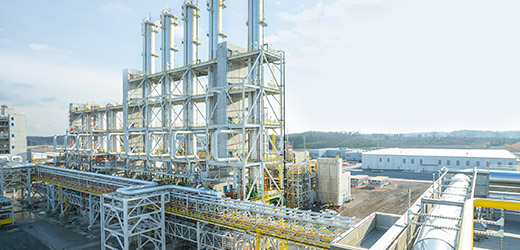Strategy of the WACKER Group
WACKER pursues five overarching strategic goals. The core elements are profitable growth, leading competitive positions in our business divisions and achieving sustainability. WACKER published new strategic goals for the Group and for each business division in late March 2022. These goals cover the period up to 2030 and are the compass for our business success. The element that binds together our overarching strategic goals and operational goals is our corporate purpose: Our solutions make a better world for generations.
Our new goals for the period up to 2030 are:
- Accelerate our growth.
In the future, sales growth – the result of higher volumes and a better product mix – should be between 1.5 and 2 times the historic rate of 4 to 5 percent per year. WACKER aims to achieve sales of over €10 billion in 2030. - Enhance our profitability.
We want our chemical-division EBITDA margins to be above 20 percent by 2030 and the margin at WACKER BIOSOLUTIONS to be around 25 percent. WACKER POLYSILICON’s target is above 30 percent. Return on capital employed (ROCE) is to rise by 2030 to more than twice the cost of capital at the chemical divisions and at WACKER POLYSILICON. We want ROCE at WACKER BIOSOLUTIONS to be substantially higher than the cost of capital. - Increase our capital expenditures.
We are intensifying our investment in capacity expansion to meet strong demand from our customers. To this end, we will systematically pursue our specialty chemicals strategy in the chemical divisions. WACKER will double its investment spending to over €400 million annually. We are actively scaling up our biotech activities with capital expenditures of over €80 million a year. In the polysilicon business, around €100 million annually is to be invested in semiconductor applications. - Focus on sustainability as a powerful driver of future growth.
WACKER’s products and solutions help its customers to become more sustainable. Two-thirds of WACKER’s product portfolio already contributes to sustainable solutions. Increasing demand in this area is creating additional growth opportunities, which we want to leverage effectively. - Work systematically on our own sustainability.
In December 2021, WACKER published specific sustainable development goals for the period up to 2030. The main goal is to reduce absolute greenhouse gas emissions by half during that time frame. WACKER’s target is to achieve a net zero carbon footprint by 2045.
For further information, visit www.wacker.com
Capital Employed (CE)
Capital employed is the sum of average noncurrent assets (less noncurrent securities and deferred tax assets), plus inventories and trade receivables (less trade payables). It is the variable used in calculating the cost of capital.
EBITDA
Earnings before interest, taxes, depreciation and amortization.
Emission
Substance outputs, noise, vibrations, light, heat or radiation emitted into the environment by an industrial plant.
Polysilicon
Hyperpure polycrystalline silicon from WACKER POLYSILICON is used for manufacturing wafers for the electronics and solar industries. To produce it, metallurgical-grade silicon is converted into liquid trichlorosilane, highly distilled and deposited in hyperpure form at 1,000 °C.
Return on Capital Employed (ROCE)
Return on capital employed is the profitability ratio relating to the capital employed. ROCE is defined as earnings before interest and taxes (EBIT) divided by capital employed. Investment income from Siltronic AG and the corresponding carrying amount in equity are not included when ROCE is calculated. ROCE is a clear indicator of how profitably the capital required for business operations is being employed. It is influenced not only by profitability, but also by capital intensity with regard to noncurrent assets required for business operations and to working capital. ROCE is reviewed annually as part of our planning process and is a key criterion for managing our capital expenditure budget.

